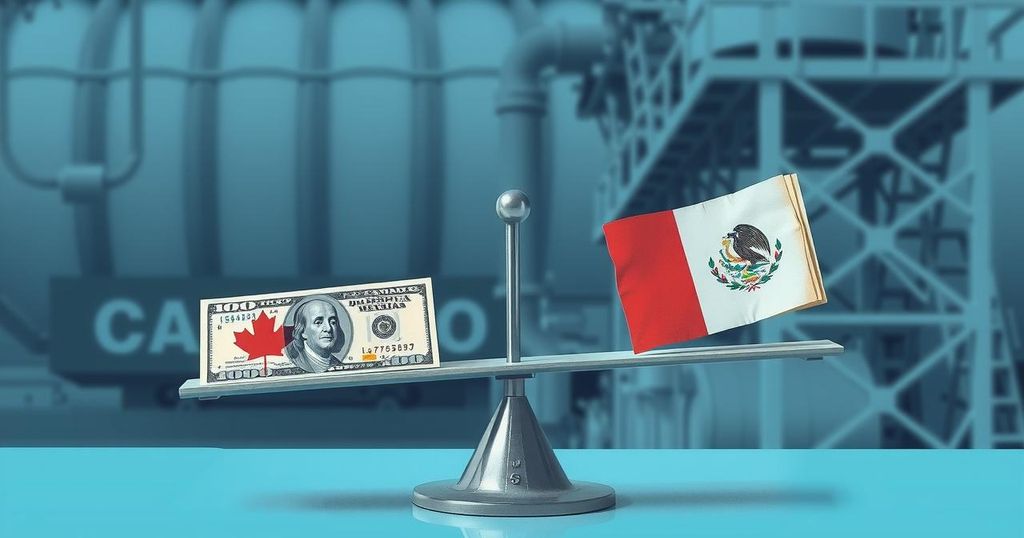Canadian Dollar Faces Greater Challenges than Mexican Peso Amid Tariff Disputes

The Canadian dollar has declined by 0.5% since Trump’s inauguration, falling behind the Mexican peso, which has appreciated by 3.5%. Analysts attribute the loonie’s weakness to Canada’s vulnerability to tariff impacts and aggressive political responses, while Mexico’s strategic negotiation tactics have afforded it a more favorable position. Mark Carney’s election as Liberal leader adds complexity to the situation, potentially further affecting the Canadian currency.
The Canadian dollar, often referred to as the “loonie,” has faced greater challenges compared to the Mexican peso amidst ongoing tariff disputes initiated by the Trump administration. Since Trump’s inauguration, the Canadian dollar has depreciated by 0.5% against the U.S. dollar, while the Mexican peso has seen an appreciation of 3.5%. Currently, the loonie ranks near the bottom in a comparison of 16 major currencies, sparking concerns among analysts.
Experts attribute the peso’s resilience to Mexico’s ability to make concessions that mitigate some market penalties. Nick Rees, head of macro research at Monex Europe Ltd., noted that Canada’s economy is more exposed to tariff threats, leaving the loonie more vulnerable. This situation is expected to intensify, particularly with Mark Carney’s recent election as the new Liberal leader, who plans on maintaining retaliatory tariffs to push for respect from the U.S.
In contrast, Mexico’s President Claudia Sheinbaum has opted for a more strategic and reserved approach in negotiations since the tariffs’ onset. Recent remarks by U.S. Commerce Secretary Howard Lutnick highlighted Mexico’s measured responses. Analysts from JPMorgan Chase & Co. indicated that Mexico’s smoother negotiations with the U.S. government are distinct from Canada’s more confrontational stance.
JPMorgan has forecasted potential tariff exemptions for Mexico, particularly in the auto sector. They suggest that Mexico may appease the U.S. by limiting imports from China while also addressing tariff-related loopholes. The situation is optimistic for Mexico amidst ongoing negotiations, suggesting bullish market conditions.
Derek Holt from the Bank of Nova Scotia commented on Mexico’s currency struggles from previous domestic issues, as the peso’s 17% decline since last April contrasts with the more moderate 6% drop of the Canadian dollar during the same period. As analysts observe tariff uncertainties, Sarah Ying from CIBC posited betting on further rate cuts from the Bank of Canada as consumer sentiment declines, contributing to the weakening of the Canadian dollar against the peso.
In summary, the economic impact of the ongoing tariff disputes has disproportionately affected the Canadian dollar compared to the Mexican peso, primarily due to differences in trade negotiation strategies and economic vulnerabilities. The Canadian economy’s heightened exposure to tariffs and the recent political shifts under Carney’s leadership will likely continue to influence the currency’s performance in the coming months.
In conclusion, the Canadian dollar’s relative weakness against the Mexican peso can largely be attributed to its heightened susceptibility to U.S. tariffs and aggressive negotiation strategies. As the new leadership under Mark Carney takes a firmer stance, further challenges may arise, particularly with ongoing uncertainty in Canadian trade policies. In contrast, Mexico’s more measured and strategic approach to negotiations has allowed its currency to remain more stable during this ongoing tariff crisis.
Original Source: financialpost.com







